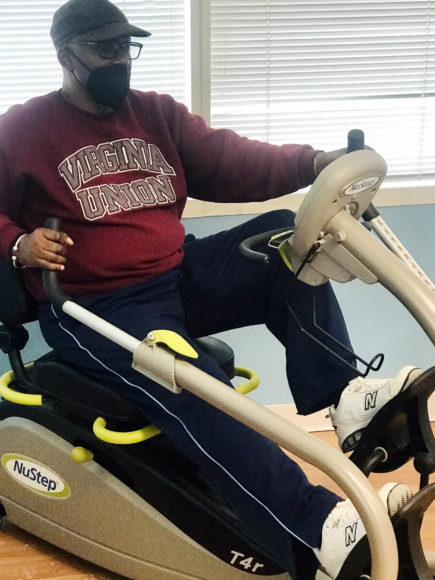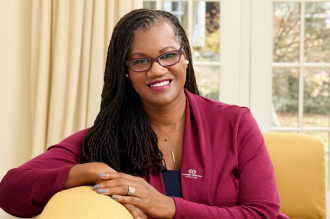Throughout my childhood and teens, my parents used to take the family to visit our cousins in Stamford once or twice a year for parties and other occasions. Whatever the season, it was always a beautiful drive up the Hutchinson River and Merritt Parkways to Exit 35. Today my cousins are planning their retirement. They are still in Stamford, the city where they bought a home and raised three now grown children.
A longstanding moniker for Stamford is “The City That Works.” As I recently drove up the familiar parkways on a cold wintry day, I wondered: How is Stamford continuing to work for the 18,600 seniors — more than 14% of its 135,740 residents — who call this nearly 400-year-old municipality home? In researching the city, I found that an FBI report named it the “safest city in Connecticut and New England and one of the safest in the nation.” Certainly, a good start.
Many pluses for those 65-plus — and more in the works
“I would emphatically say, ‘yes, Stamford works for seniors,’” says Bridget Fox, chief of staff to Mayor Caroline Simmons. (See story on page 12.) From her vantage point in the city’s executive office on Washington Boulevard, and as someone who has senior family members in Stamford, she finds the city rich in amenities, culture, recreation, dining and civic opportunities for those 65 and over.
Also, according to Fox, the city is developing initiatives to make Stamford more inviting and affordable during the golden years.
The mayor plans to partner with local nonprofits across the city to find ways to help seniors reengage in civic life while observing all Covid safety protocols. The city also plans to increase resources for mental health. Fox explains that it will continue to expand access to transit and provide more walkable streets.
Simmons recently advocated to change the senior tax abatement calculation. If approved by the Boards of Representatives and Finance, homeowners and single individuals will receive up to $2,000 in property tax abatement and married couples, $2,250, depending on their income.
Sharing knowledge and finding solutions
My next conversation is with Susan and Paul Doyle of North Stamford. The couple own and operate Oasis Senior Advisors in Fairfield and Westchester counties and moved to Stamford at the height of the Covid pandemic. They are fixtures on the local eldercare scene. Through Oasis, the Doyles help identify living options that change and evolve for older persons.
In addition to Oasis, the couple created “The Downsized Gourmet,” a lively cooking program broadcast via Zoom that teaches viewers how to prepare smaller meals portioned for one or two. It was a logical choice for a pair known to host gatherings of up to 40 pre-Covid. Susan demonstrates the meal prep; Paul is the producer. Senior center members around the state join the Doyles each month to try out recipes on the air. The program has been particularly welcome to the many who have been isolated due to the pandemic.
“A lot of cooking shows make complicated, fancy dishes,” Susan says. “This is about making something small, simple, healthy.”
“The Downsized Gourmet” supports the local food market community. Many ingredients used in the program are purchased at a Stamford specialty food market as well as local supermarkets.
“I enjoy exploring the Farmer’s Market at Harbor Point, LaRocca’s (Country Market) in North Stamford, Taste of Poland on Newfield Avenue and Fusaro’s (Italian Deli & Market) on High Ridge (Road), among others,” she adds.
Tips and recipes from “The Downsized Gourmet” can be found in a cookbook by the same name published by the Doyles. All proceeds from sales are donated to the Alzheimer’s Association.
“This is a really fun thing,” Paul says. “It is not a business. It is part of who we are. Sharing our knowledge to help folks find solutions to challenges they face just makes sense.”
A place to find a purpose
My last stop is a visit with Christina Crain, executive director of the Stamford Senior Center (SSC). She has led SSC for nearly eight years of the organization’s 26 and has seen the site go through peaks and valleys since the start of the pandemic. She describes this period as a reopening of SSC as it skillfully balances a full slate of online programs with traditional in-person recreation, fitness, education and social activities.
The center that once served more than 800 has had its membership drop to 475 due to Covid, yet the number is climbing back up. To help members feel safe returning, Crain and her team have installed air purifiers and mandated mask wearing and social distancing of 7 feet in all fitness classes. A disinfecting fogger machine is one of several new sanitization protocols.
The center remains, Crain says, “a place where seniors from all walks of life feel safe. It represents the diversity of Stamford. It is a place where seniors can make new connections. The center gives them a sense of purpose, one that is different for every person.”
A trio of members who have become volunteers at the site’s computer center have found another purpose and a way to give back. Rouja Brzozowski, Peter Ebstein and Stu Madison offer basic computer training, help in learning a program and other related skills to members. On the day I visit, the trio introduces me to Maryann Koller, who is learning how to set up and use her first smartphone.
I also meet Michael K. Coleman, who can often be found in the SSC fitness center. He likes to use the recumbent bike to supplement exercise treatment he receives at a local pulmonary rehabilitation program. He joined when the cold weather prohibited exercising and socializing at a local park with his friends. When I ask how long he will keep his annual $50 membership, he says simply, “I will stay as long as I can stay.”
My trip reveals opportunity and great support for those aging in Stamford. Its people are adapting and finding ways to make life work in a city that has always been and continues to be ready, willing and able to give.
For more, visit concierge-care.com.


